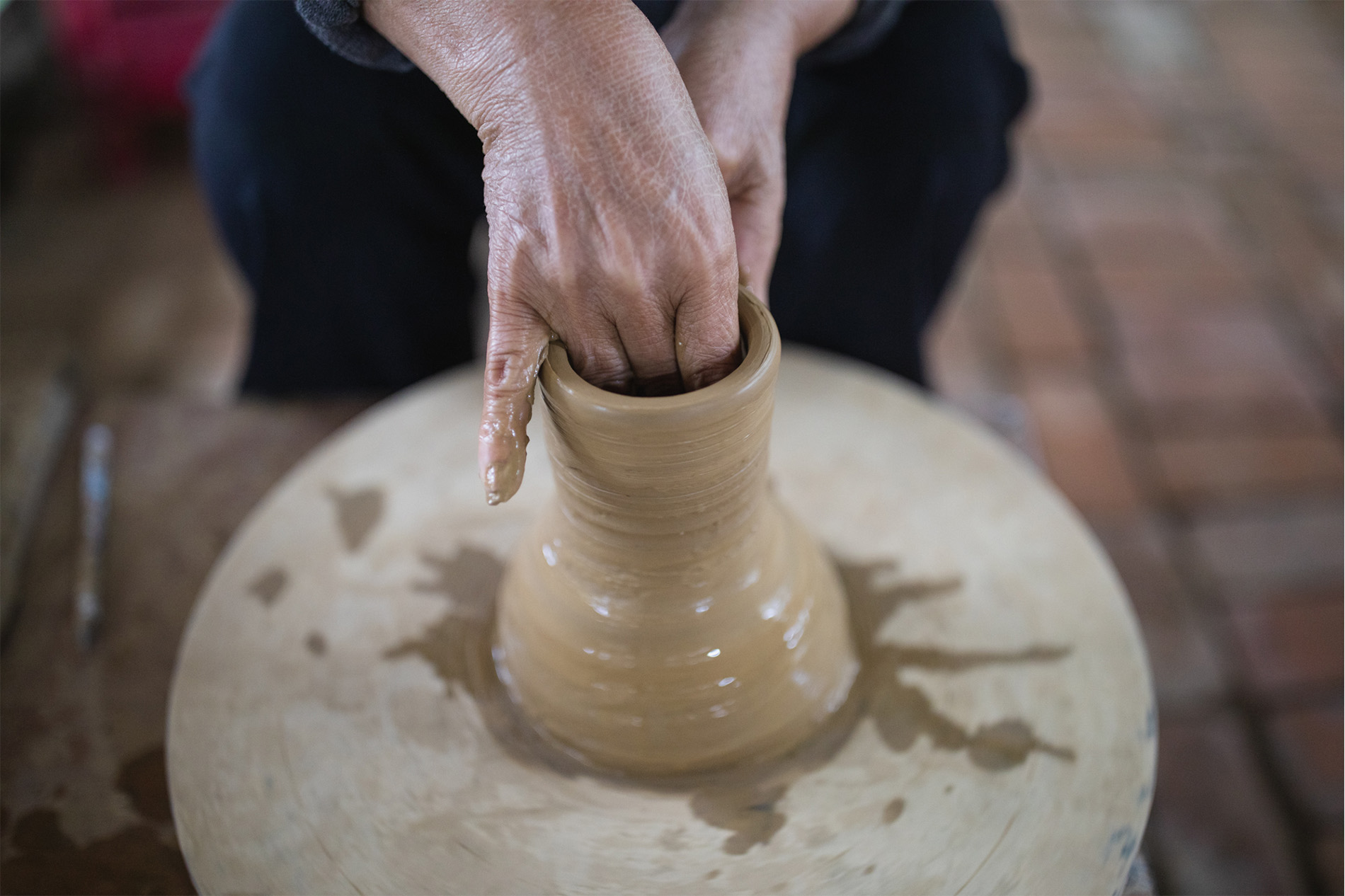Culture in Quang Nam
Quang Nam is bursting with treasures for avid culture seekers. Each wave of settlers and rulers left an impression in their own way, gifting today’s visitors with countless stories to uncover. Get to know the area’s ethnic minorities, tour ancient craft villages, step inside time-honored temples, and immerse yourself in the heartfelt rituals of life in the countryside. Read on for our favorite culture-inspired trip ideas.
A sustainable guide to Hoi An shopping
Hoi An is still a fantastic place for shoppers, especially when your money goes to supporting local businesses. By choosing to buy from ethical brands and local craftspeople,…
A green traveler’s guide to Cam Kim Island
Cycling around Cam Kim Island is pure fun, passing wood-working stations, lanes shaded with bougainvillea bushes, brilliant green rice paddies and vegetable patches. Set aside a…
Quang Nam’s compelling craft villages
Take a close look around Hoi An Ancient Town, and you’ll see much of its beauty comes from small touches that adorn the ancient houses and temples. This fine work comes from craft…
The architecture of the Ancient Town
Painted mustard yellow, sometimes sporting teal blue doors or emerald green windows, Hoi An’s timber-frame shophouses are some of the most photogenic buildings in Vietnam. As you…
Hover over the points on the map to explore Hoi An Ancient Town.



The communal house of Cam Pho village dates back to 1818, and is home to a 200-year-old banyan tree.

Bai Choi is a traditional game from Quang Nam, and is listed by UNESCO as an Intangible Cultural Heritage.

The Hoi An Market is the heart of the city’s food scene. Stroll through to see countless stalls selling fresh produce and dry goods.

The iconic wooden Japanese Bridge is said to have linked the Japanese and Chinese quarters of Hoi An in the early 1600s.

An Hoi Bridge
This walking bridge connects the Ancient Town to An Hoi Islet across the Thu Bon River, and is a top spot for taking photos.

This assembly hall was founded in the 1660s by immigrants from Fujian province. You can’t miss its ornate three-entrance gate.

Completed in 1885, this striking assembly hall served as a community center for Chinese settlers from Guangzhao and Zhaoqing.

This museum showcases insightful information and detailed exhibits on the craft villages and traditional culture of Hoi An.

Tan Ky House
Get a glimpse inside the life of a wealthy Chinese trader at the Tan Ky House, which has been home to the same family for seven generations.

Bach Dang Wharf
Boats come and go all day from this busy wharf, taking passengers to the many small islets in the Thu Bon River.

This museum in a colonial-style house presents special artifacts from the Sa Huynh civilisation, found at archeological sites around Hoi An.

Hoi An is known for its crafts and workshops. Try your hand at painting masks, throwing pottery, or making lanterns.

A leisurely cyclo ride is a fun way to see the streets and shophouses of the Ancient Town. Climb aboard after dark to see the lanterns aglow.

Many charming cafes such as Phin Coffee are hidden in the narrow yellow alleys of Hoi An. Don’t be afraid to explore.

Lanterns are a lasting symbol of Hoi An. You can buy lanterns in the night market or take a lantern-making class to craft your own.

Shopping is always fun in Hoi An. In the Ancient Town you’ll find many stores selling clothes, leather goods, and edible souvenirs.

Don’t miss the chance to try Hoi An-style banh mi. Here, warm and hearty banh mi are made with fresh herbs and smoky chili sauce.

Hoi An’s most famous noodle dish makes the perfect lunch. Dig into chewy noodles, lacy greens, crispy crackers, and barbequed pork.

Decades of Chinese influence in Hoi An can easily be seen in a plate of com ga. Be sure to try this delicious chicken rice dish.

Réhahn Gallery
Enjoy some of the most famous pictures of Vietnam taken by French photographer Rehahn at this gallery near the Ancient Town.

A boat ride is an excellent way to see more of Hoi An’s scenic waterways. Take a wooden motorboat for a sunset cruise or a small sampan after dark.

Reaching Out Teahouse
This beautiful teahouse and social enterprise in the Ancient Town serves premium Vietnamese tea and coffee, and traditional snacks.

There are countless excellent restaurants in Hoi An. Mango Mango is a favorite spot for modern Vietnamese food with a view of the river.

This bustling outdoor market sells everything from Cham Island fish to cinnamon bark. Come in the early morning to see eye-popping produce.

Hoi An’s oldest buildings date to the early 1800s, and still feature beautiful wood carvings, tiled roofs and timber frames.
Nothing found.














